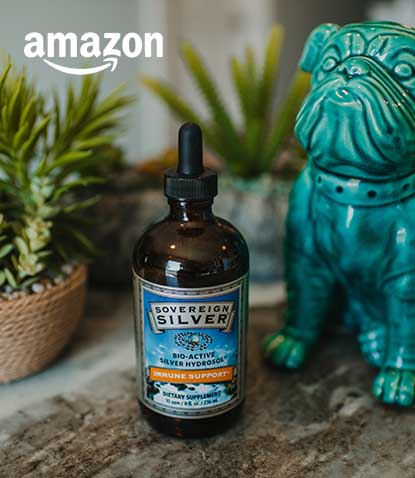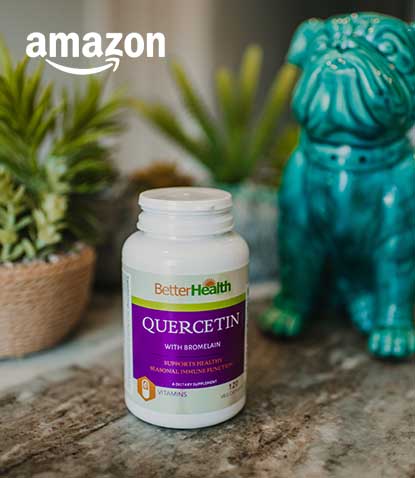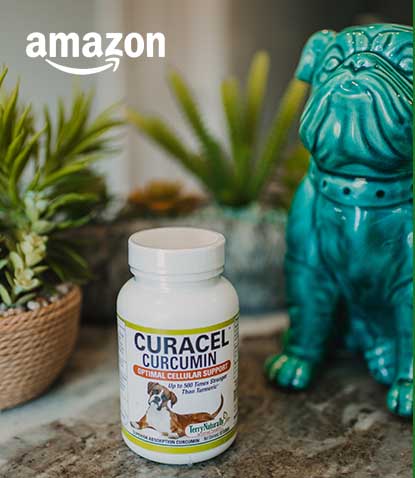Supplements
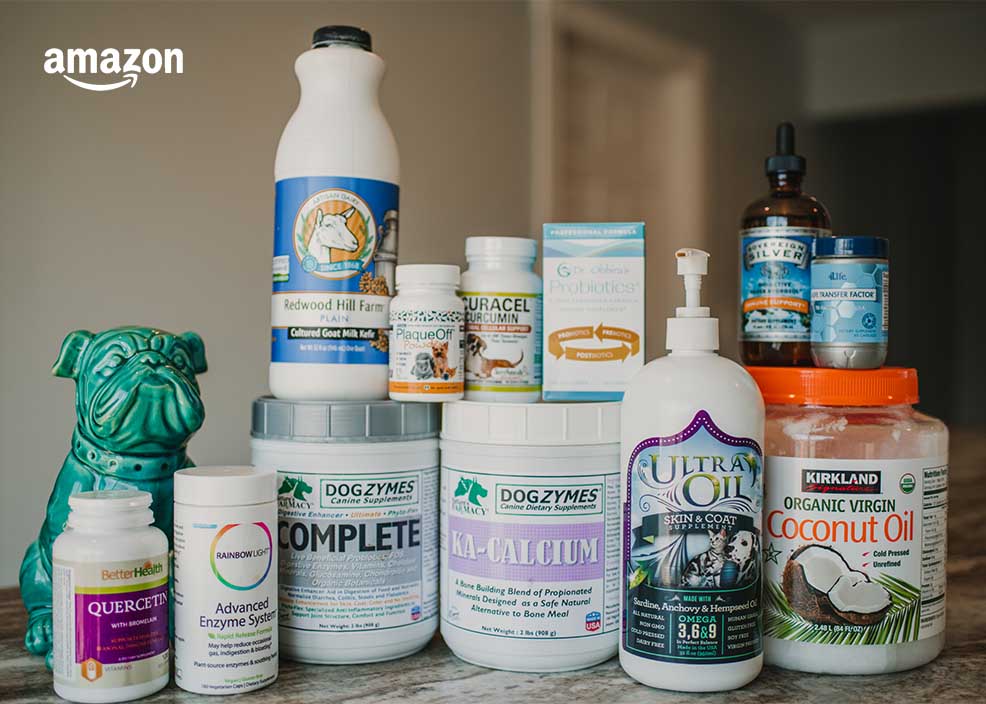
Canines require six essential classes of nutrients to live a healthy life: water, protein, fats, carbohydrates, vitamins and minerals. However, every individual dog may require more or less of some of those essentials. To fully understand your dog’s nutritional requirements, we always recommend visiting a veterinarian or pet nutritionist to discuss your dog’s activity level, age, health or genetic issues before incorporating any supplements into your dog’s diet.
Here’s a sample of the daily supplements we used with Tyson and found the most beneficial in accompanying his raw food diet and addressing some of his individual needs:
- Quercetin with Bromelain
- Rainbow Light- Advanced Enzyme System Digestive
- Dogzymes Complete
- PlaqueOff Powder
- 4Life Transfer Factor Tri Factor Formula For Immune Supplement
- Curacel Curcumin
- Cold Pressed Unrefined Organic Virgin Coconut Oil
- Goats Milk
- Dogzymes Ka-Calcium
- Dr. Ohhira’s Probiotics
- Ultra Oil Skin and Coat Supplement
- Sovereign Silver Hydrosol Colloidal Silver
Whitefish Diet Supplements
- Rainbow Light – Advanced Enzyme System Digestive
- 4Life Transfer Factor Tri Factor Formula For Immune Supplement
- Dr. Ohhira’s Probiotics
- Ultra Oil Skin and Coat Supplement
- Dasuquin (for Tyson’s age and arthritis)
- Sovereign Silver Hydrosol Colloidal Silver (added directly to food)
- Quercentin with Bromelain (fights allergies and acts a natural antihistamine in lieu of Benadryl)
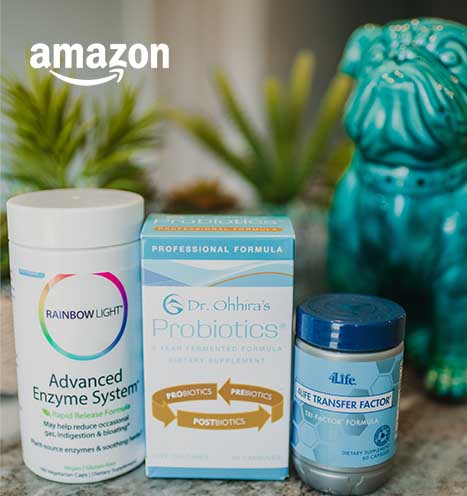
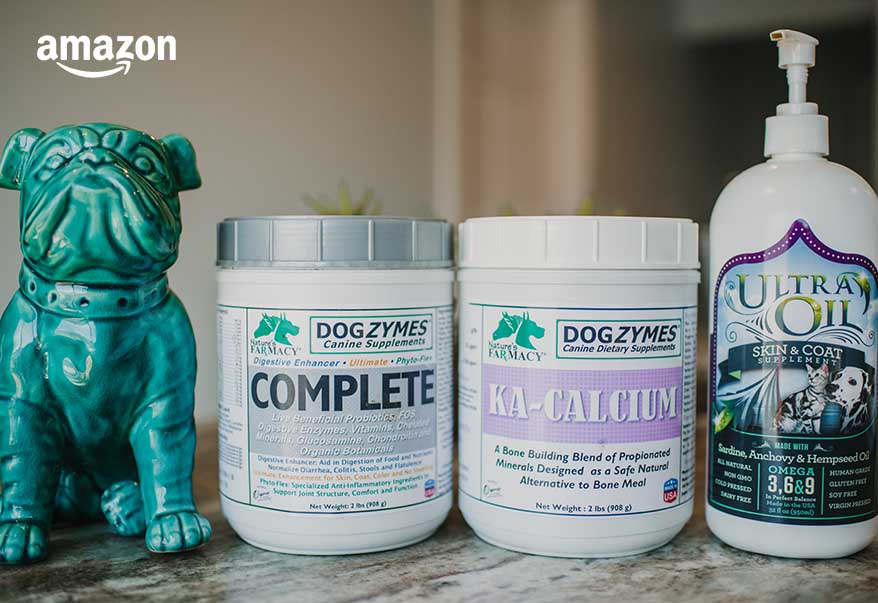
Howies’s Daily Dose
Here’s a look at Howie’s puppy supplements:
- Dogzymes Complete
- Dogzymes KA-Calcium
- Ultra Oil Skin and Coat Supplement
All Natural Charcoal Baths
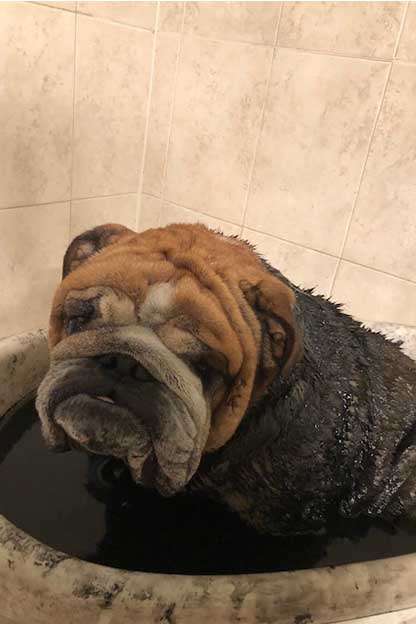
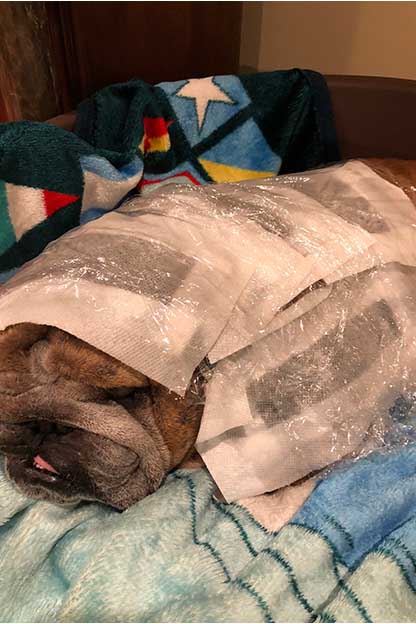
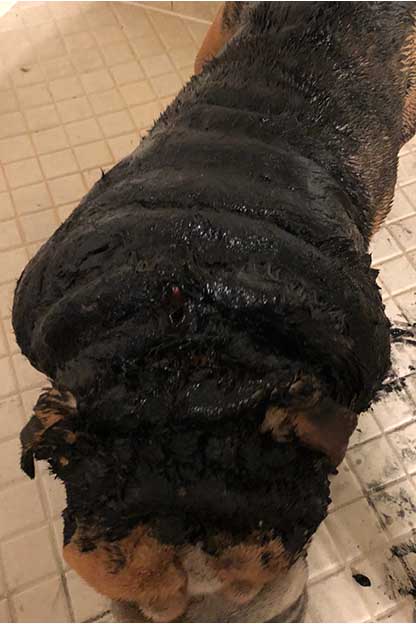
We did whole bath with Charcoal in water maybe a couple inches deep just to soak the paws. We then applied the mask all over his body concentrating on the areas where the issues were so the Charcoal can penetrate and pull the toxins out. The Bentonite Clay acts as a soothing agent on the skin. Another option for the Charcoal bath is to use Charcoal and Baking Soda. To do this bath you can make the water with charcoal in it as above. You can add Baking Soda to the water if you like. I do sometimes with and something without. Baking Soda helps opens the pores although you don’t want to do too much as it may be irritating to your dog. For the mask mixture, use equal parts of Baking Soda to charcoal and put on the affected areas or all over the body and well into the paws and underpads (if not doing in the bath tub itself). You can do the baths either in the tub or not and just put the mask directly on your dog. For those with just paw issues you can just apply the mask the paws and underpads and let sit for about 10-20 minutes then rinse thoroughly.
When giving the baths, massage into the skin and rinse thoroughly. You can wash with soap afterwards; I recommend Chorlhexdine 4% or my new favorite, Zymox. If your dog’s skin is also dry you can add the conditioning rinse after and leave on. Few other add ins you can do is also add a little Apple Cider Vinegar to the water with the Charcoal in the bath or even a couple drops of Tea Tree Oil. Both act as to help soothe and fight any itching your dog may be having. I sometimes wrapped in saran wrap to keep the heat in therefore promoting opening of the pores and clearing of the toxins. I rinse and dry thoroughly and for areas of redness or detox, I apply some Gold Bond (such as tail issue, chin redness etc.) for hotspots or scabby areas, Calendula Cream/Aveeno Cream or the Witch Hazel Aloe mixture would be helpful in combating the skin issues you’re having.

If doing the poultice, make a mask of Charcoal water and milled Flax Seed until you form a paste. Put this paste in the center of a piece of old t-shirt cut into thick strips and or paper towel. Fold top and bottom as well as sides so it covers the mixture. Apply to the affected area and wrap. I usually would put a piece of Saran Wrap over it then some gauze pad, then an ace bandage to hold it in place whether it’s the body or paw. Because Tyson had deep paw cysts, we did the mask of Charcoal and Clay direct to his paws and wrapped as well as put on baby socks or paw covers.
Here are our favorite products for Charcoal Baths, Wraps and Poultice:
- Ikea baby tub
- Starwest Botanicals Activated Hardwood Charcoal Powder 4 oz. Bag (for use in baths or mask)
- Starwest Botanics Bentonite Clay 1 lb. (for use in baths and mask, good for skin soothing)
- Baking Soda (for use in Charcoal bath when you’re really trying to open pores and clean out)
- Healthworks Ground Flax Seeds Organic Cold Milled (for use in diet, Charcoal Wraps, Poultice)
- Boiron Calendula First Aid Cream, 2.5 oz. (topical for skin abrasions, chafing, helps during detox when skin erupts)
- Superior Colloidal Silver Gel, 4 oz. jar with Organic Aloe (used as a topical first aid)
- Sovereign Silver, 2 oz. (used as a topical first aid)
- Vetericyn Plus All Animal Wound & Skin Care (itch and sore relief, cleans cuts and relieves irritation)
- Majestic Pure Aloe Vera Gel 100% Pure & Natural (for use with no alcohol Witch Hazel for itch relief)
- Homestead Co. Witch Hazel Alcohol & Fragrance Free (for use with Aloe for itch relief)
- Aveeno Anti-Itch Cortisone Cream Maximum Strength, 1 oz.
- 24 Gauze Bandage Rolls with Medical Tape (for use in wrapping wounds or paws when doing a Charcoal Poultice)
- 3M Single Roll Bandaging Tape 4″, 5 yds. (used over gauze wrap when wrapping paws for Charcoal Poultice)
- Pawflex Bandages for Pets, 4-pack (used in wrapping paws for Charcoal mask)
- K9 Ear Solutions Ear Cleaner with Colloidal Silver
- Zymox Itch Relief Soap & Conditioning Rinse (for after Charcoal bath)
- Wonder Dust Wound Care (used for large open wounds to close the wounds)
- Chlorhex 2x 4% Shampoo, 8 oz. (I buy the gallon for Tyson, can be too drying)
- Malacetic Wipes (for nose ropes, hot spots, paws, tail to clean), 100 ct. tub
- Boiron Optique Eye Irritation Relief Eye Drops, 30 ct.
Flea & Tick Options
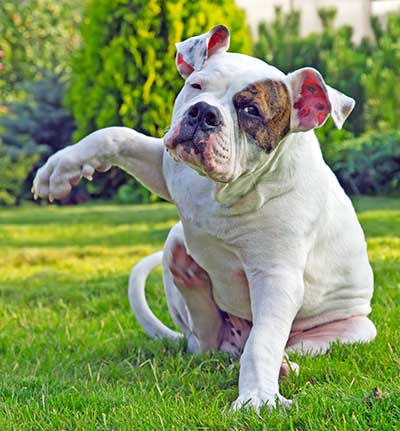
Diatomaceous Earth is a remarkable, all-natural product made from tiny fossilized water plants. Diatomaceous Earth is a naturally occurring siliceous sedimentary mineral compound from microscopic skeletal remains of unicellular algae-like plants called diatoms. These plants have been part of the earth’s ecology since prehistoric times. It is believed that 30 million years ago the diatoms built up into deep, chalky deposits of diatomite. The diatoms are mined and ground up to render a powder that looks and feels like talcum powder to us. It is a mineral based pesticide.
DE is approximately 3% magnesium, 33% silicon, 19% calcium, 5% sodium, 2% iron and many other trace minerals such as titanium, boron, manganese, copper and zirconium. Continual breathing of any dust should he absolutely avoided. This DE is not the same thing as the DE used in swimming pool filters.
Pool grade DE is treated with heat, causing the formerly amorphous silicon dioxide to assume crystalline form. Pool grade DE should never be used for pest control. To insects DE is a lethal dust with microscopic razor-sharp edges. These sharp edges cut through the insect’s protective covering drying I out and killing them when they are dusted with DE If they ingest the DE it will shred their insides.
Neem
For centuries the Neem tree has been known as the wonder tree of India. Because of its wide variety of applications, it is commonly called the “Friend and Protector of the Indian Villager. Modern research studies have discovered that it contains both alkaloids and limonoids, each with an array of medicinal properties. For instance, oneliminoid (azadirachitin) has been found to be 95% effective when used as a pesticide and insecticide. NEEM is also useful for wound healing.
Yarrow
Yarrow is a flowering plant. Part of the sunflower family, Yarrow can be found growing wildly in the Northern Hemisphere. Acting as a repellant, this herb also helps to soothe the skin.
Mix these three dry ingredients in equal parts and pour them into a shaker jar. To apply to your dog, ruffle the hair back to expose the skin and apply small amounts working your way from the rear to the front. If you are using this mixture for ticks, be sure to cover the neck area. Rub it in briskly. For a medium sized dog, you should only need to use about a teaspoon of the dust. Apply the dust to your dog every month.
If you are treating for fleas, wash all bedding and apply the dust to every animal in the house. Once bedding is washed, you can dust beds and any carpeting with the mixture. This mixture will also work to repel flies and mosquitoes!
Flea & Tick Recipes…
Garlic…
Did you know a daily dose of ingested Garlic wards off fleas during flea and tick season? Fleas don’t like the taste and if they do bite, Garlic acts has the body’s natural antibiotic. It only takes a few weeks for it to build up in your dog’s natural coat, so feed it before bug season starts!
5 lb. dog – 1/6 tsp.
10 lb. dog – 1/3 tsp.
15 lb. dog – 1/2 tsp.
20 lb. dog – 2/3 tsp.
30 lb. dog –1 tsp.
Dry Eye Issues
Tyson’s eyes started getting cloudy and filled with eye boogers. Instead of running to the vet, I tried a few at home remedies first. Using Euphrasia Homeopathic Eye Drops and a dose of Thuja for two days if needed (3-5 pellets once a day). When that didn’t work, we went to the vet concerned it was and Eye Ulcer/Cataracts. Tyson was tested and basically had dry eyes.
How did we treat it without doing the vet Cyclosporine drops?
Foods that help:
- Sardines
- Hardboiled Cage-Free Eggs
- Canned Pears in its Juice
- Clams
- Spinach or Broccoli, Cooked
- Carrots or Pumpkin, Cooked
- Blueberries
- Freeze Dried Organs
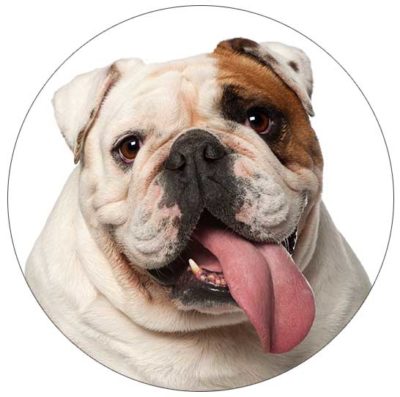
We used Clams and Pears in each meal approx. 1 slice pear and 2 tsp. of Clams and a few Blueberries as a snack.
Supplements we used were Ocu Glo and Sam E both from Amazon (two Ocu Glo and one Sam E vitamin once a day). Added things were to keep the eyes hydrated through Eye Lubricating Drops such as Optixcare Eye Gel, Rohto Eye Drops, Genteal Eye Lube, and Terramycin which is an over the counter antibiotic. We kept that when we thought an infection was coming on and usually within a day it was gone.
We took the supplements and food everyday and used the eye lubrication/drops 4-6 times a day. When the eyes don’t produce tears, bacteria build up in the eye. Usually blinking with moisture acts as like a windshield wiper and cleans the bacteria away, when the eyes are dry they cannot clean them of the debris therefore creating “eye boogers” to clean the “eye boogers” away you have to be diligent with the drops. It worked very well for us without having to do the Cyclosporine drops. No blindness or need for surgery occurred.
We were blessed for every day together. I am not a vet and some pets do require more extensive care and/or surgery. Our goal is to try every natural alternative method before a medication or surgery is needed.
Dry Eye Diet
- 1 lb. Organic Ground Beef
- 3 oz. Beef Liver, Ground or Chopped
- 3 oz. Beef Heart, Ground or Chopped
- 4 oz. Spinach or Kale, Finely Ground or Chopped
- 3 oz. Carrot, Finely Ground or Chopped
- 1 Cage-Free Egg, No Eggshell
- 2 oz. Clams, rinsed well to remove the salt
- 1 Pear, Ground or Chopped in its own Juices
- 2 tbsp. Finely Ground Almonds or Almond Milk
- 1 tbsp. Ground Peppermint
- Add 2 Sardines, canned in water at time of feeding
Directions:
- Preheat oven to 325˚ F
- Mix items together in a large bowl
- Put into a greased loaf pan
- Either cook in over for 30-40 minutes, in a slow cooker on low for 4-6 hours or fed raw
TIPS FOR FEEDING ANY PET WITH EYE ISSUES
- Feed a healthy diet with plenty of leafy green veggies like Spinach and Kale to support the Liver
- Minimize toxins and stress on the liver, minimize vaccines and titer when necessary
- Supplement with antioxidants like CoQ10 at 30mg for small dogs, 100mg for medium dogs and 200mg for large dogs
- Provide Ocu Glo Vitamins
- Provide Sam E vitamins at 90mg for small dogs, 225mg for medium dogs and 400mg for large dogs, once daily
- Give Milk Thistle at 5-10 mg per pound of body weight daily
Vaccines
When you first begin the vaccine detox, crush five pills (Nux Vomica) in a small water bottle with about an inch of water (shake well to dissolve) and give 1 tsp. three times daily for 3 days from the same water bottle (shake well before using each time). Wait 3 days (no remedies) then give 3 pellets of Thuja under the tongue, also three times daily for 3 days. Then wait 3 more days (of no remedies) and do the same with Lyssin as you did with Thuja. You should also follow the whitefish diet and use a skin supplement. It will get worse before it gets better so just like a drug addict is coming off of drugs, your dog detoxing is doing the same. You may see bumps come out on the skin, cysts in paws, itchy ears or itchy skin. This is when the charcoal baths come in handy and will help soothe the body as well as pull out any toxins your pup is holding. It may take a few times and will not go away overnight so be patient. It is also suggested to get some of the creams and ointments mentioned to soothe the skin while going through a detox. The basic theory is you endure 1 month of detox for every year of vaccinations given.
Did you know that vaccinations could cause the immune system to temporarily suppress for 2-3 weeks after the vaccination? Repeated vaccines frequently can put a serious drain on your dog’s system. Additionally, vaccines given too young (under 8 weeks) can also compromise the immune system. Most importantly, if and when you do vaccinate, make sure it is on a perfectly healthy dog. A sick dog’s immune system is already compromised. Vaccinating during illness further threatens the immune system. Tyson was vaccinated every year for 7 years therefore we did the detox as noted above. We all know that vaccines are necessary – but they are absolutely not necessary repeatedly! After the core vaccines your bulldog should only be titered to make sure he is protected. Vaccines are especially dangerous for pure breeds who have accumulated vaccine sensitivities over many generations. And I am almost POSITIVE that over-vaccination and vaccines are the silent killer of many of our bulldogs. The number of bullies I know that were cured of their “auto-immune disease” after being detoxed is astonishing.
Vaccinosis is VERY REAL and completely ignored by conventional veterinary medicine as they thrive off the earnings. The animal is typically treated for the disease the vaccine has caused for the rest of its life. And then the drugs given do more damage than the disease it was attempting to fight. If your bulldog (or any dog) is suffering from an auto-immune disease or allergies it is very likely they’re suffering from the effects of a vaccine gives recently or that statement. even years previous. They are absolutely dangerous for our bullies and I can’t express the seriousness of it. Read more about it here: (taken from Bobzilla.org).
Tyson had all these signs of detox go on with him. It’s to be expected as you need to get all those extra vaccines, medications, kibble food chemicals out of the body and this is the way it reacts to rid the body of the toxins. Charcoal bath is good for all these issues. CBD also helps with any pain or inflammation while going through detox. Purchase Odessa’s CBD Oil here.
Shop Our Vaccine Detox Remedies:
- Boiron Thuja Occidentalis, 200ck 80 ct. (for vaccine detox 1 of 3 needed)
- Hyland’s Nux Vomica, 30x 80 ct. (for vaccine detox 2 of 3 needed)
- Lyssin200C (for vaccine detox associated with Rabies 3 of 3)
- Hyland’s #12 Silicea, 30c 500 ct. (given to pull something out, skin eruptions etc.)
- Hyland’s Hepar Sulph. Calc., 30x tablets, 250 ct. (natural relief for coughs, cold and skin eruptions)
- Washington Homeopathic Remedy Chest (great for humans and pets)
But What if They’re Susceptible to Something, Susceptibility To What?
The state of susceptibility is dependent on four primary considerations:
- Age of the animal
- State of immune and general health
- Exposure to others
- Geographical location
1. Age Before Beauty
Typically, the older the animal, the more developed the organ system. Maturation of the reproductive system commences around six months, producing estrogen, testosterone and other hormones, which are critical not only for the development of muscles, bones, and mental acuity, but also the immune system. These hormones, starting with the first peak at puberty, can virtually supercharge the immune system, turning it on full blast and decreasing susceptibility to many infectious diseases. Not only can delayed neutering or spaying for approximately two to three years be protective against all sorts of ailments, it can help to fully mature the immune system for a lifetime. If we let the body do what it is programmed to do, natural protection is more than possible.
2. State of The Union
This is a no brainer: if the immune system is healthy (old enough or nourished enough), it can and will respond to an invader. The immune system doesn’t go on vacation unless the state of health is compromised or encumbered by poor nutrition, too many vaccinations or an unclean environment – all factors that may limit its ability to fully respond. Anything you can do to detox the body and nourish the immune system will go a long way to equip it to be ready, willing and able to fight enemy invaders.
3. Exposure To Others
Common sense dictates that the greater the exposure to other ill or even vaccinated animals, the greater the risk of contracting an illness. Yes, you read that correctly: even vaccinated individuals can spread illness, as they are frequently not as protected as authorities would lead you to believe. Buyer beware! If you’re taking your new pup to every dog show in the country, daycare centers for socialization and dog parks for exercise, the risk is greater. Clearly, animals that are homebodies are less susceptible. There’s something to the wild woman wisdom of not leaving home with a young baby for 40 days; however, keeping a young dog at home can wear on your patience. On the other hand, natural exposure to the world at large will stimulate and train the immune system. More on this later…
4. Location, Location
Not every place in the world has distemper and parvo running rampant. Some places have no endemic leptospirosis or rarely see distemper. Some see it routinely. Rabies is very rare in the US, but higher outside this country. Understanding what sorts of threats are real in your community can help calm your fears and clarify your decision-making. Logging onto the Centers for Disease Control and Prevention website (cdc.gov), or your state epidemiologist’s site, can give you information about the geographical incidence of rabies.
Four Ways To Protect
You’ve thought long and hard about your pup’s susceptibility so how do you provide the best protection, matching your comfort level with safety? Four methods using natural rearing alternatives include, but are not limited to:
- Natural nakedness
- Natural exposure
- Homeopathic nosodes
- Limited vaccination
Natural Nakedness
Well, naked really isn’t naked; it’s just no vaccines. The premise is to fortify deep health using six natural rearing principles of support for the body:
- Fresh, raw food diet
- Fresh, clean water
- Clean physical environment
- Daily exercise – vigorous and social, if possible and appropriate
- Wholesome nutritional supplements and herbs
- Healthy emotional environment
These might seem too simplistic, but many natural breeders and educated parents know the value of naturally “growing” the immune system. Given healthy nutrients, water and environment (physical and emotional), the chances of vital health are great. Evolution has created an elegant system that can both protect and heal. How else would we have survived with our little wolves for millions of years before vaccinations?
Natural Exposure
Most everyone has heard of chicken pox parties but why haven’t we heard of parvo parties? The thought of exposing your puppy to a dog with parvo might seem shocking, irresponsible and terrifying but the science is actually similar to the use of vaccines. Exposing a healthy, naturally raised dog to an ill dog can create a mild disease but provide the benefits of lifelong immunity protection. Antibody titer testing three months later has shown more than adequate levels of protection. This may seem amazing but it’s no different from what the body does every day for all of us. We have become so fearful of any disease that we’ll do anything to avoid it, even poisoning the body to “protect” it.
Homeopathic Nosodes
Homeopathic nosodes are available for all the contagious puppy and kitty diseases. With a long history of use in human medicine for polio, whooping cough, diphtheria and more, their use in veterinary medicine goes back to the 1920s. Although it’s not completely clear, they likely work by creating an energetic protection, filling the open space of susceptibility, or possibly by strengthening the body’s energetic field. However, they work, they’re typically very effective, economical and flexible. Combined with the six natural rearing principles listed above, they can be used for distemper and parvo from weaning through puberty, or at times of high exposure until about one year old. Bordetella nosodes may be used at the time of exposure. It’s best to work with a veterinarian experienced in their use, as they are a prescription medicine.
Limited Vaccinations
No one can be more perfectly healthy if already perfectly healthy. Any modification or altering of perfect health will result in MINUS health. In other words: less than perfectly healthy. Realistically, no one is perfectly healthy but a brand new pup is pretty close, excluding genetic disease present at birth. The protective power of vaccines is actually due to creating a disease state in the body; low level disease, but disease nevertheless.
For example, the average dog is vaccinated with parvo, distemper, hepatitis, parainfluenza, rabies, Bordetella and sometimes corona and Lyme. The vaccinations work by asking the body to stay in a low level form of disease to create antibodies, which, in theory, provide protection so the body is ready, should there be exposure. This form of protection can work, but at a high cost to health. If the body is in a low level state of parvo, distemper, rabies, etc., then it is never in a high level state of health overall. Low-level states of chronic disease are not high-level states of vitality!
For more information on puppy vaccines and vaccination in general, check out Dogs Naturally Magazine at www.dogsnaturallymagazine.com
Options for Titer Test
http://www.protectthepets.com/order-a-titer.html
What we did with Howie & Tyson
Tyson was over-vaccinated because we didn’t know any better or that we had options. Dogs do not need to be vaccinated every year nor do they potentially need boosters. Its always a good idea to get a titer test to check the bodies antibodies for vaccines already in their bodies before pumping them with more chemical’s odds are they don’t need.
With Howie, I researched my options. I found a breeder with beliefs as mine when it comes to breeding practices, raw feeding, natural healing and more importantly vaccinations.
I met Howie when he was 6 weeks and requested that he not be vaccinated and I would do it with my integrative vet when his immune system was more mature. We also did a titer test before any vaccines because many times puppies are born with the maternal antibodies passed on from mom.
We did a titer test at 14 weeks, which came back low for Parvo and Distemper. We chose to vaccinate Parvo at 15 weeks. We also did a homeopathic remedy of Thuja 200c 3-5 pellets the day before, day of and day after the vaccine. Howie had no side effects. Was that from the Thuja or was it because he’s a healthy dog not exposed to unnecessary medications or vaccinations too early in life, was it because he’s been raw fed a species appropriate diet? Probably a combination of both but the best outcome I could have expected. 16 weeks we’ll do Distemper and do the Thuja 200c again just like before.
Some of the side effects you want to look out for are:
- Respiratory Issues
- Coughing
- Wheezing
- Vomiting
- Diarrhea
- Swelling of the Paws
- Fever
Just to name a few.
Why do I tell you all this? Because this is what the vets won’t. Puppies are born in the healthiest state possible and its our goal as pets parents to keep them healthy as long as we possibly can.


